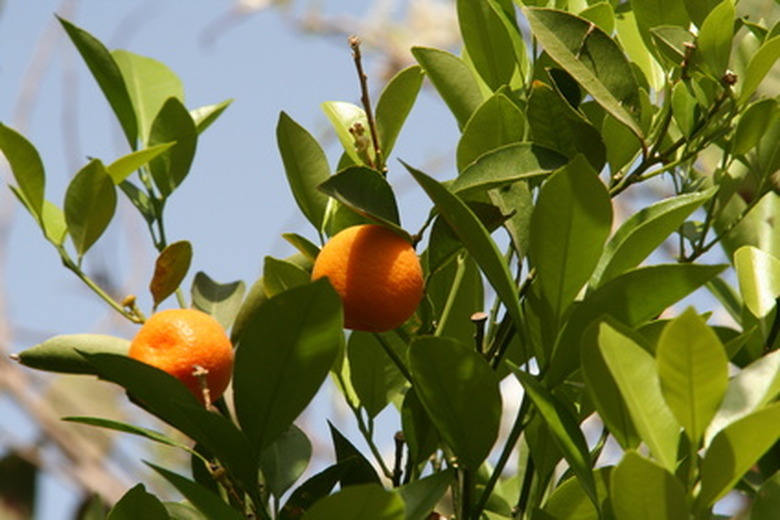Information On Orange Trees
The orange tree is one of the most versatile of all citrus trees, able to endure periods of drought and tolerate below-freezing temperatures for short periods of time. The many varieties of orange trees also make the fruit suitable for many different tastes and applications. Some are more often used for eating, while others are grown specifically for juice. However, these citrus trees can also be susceptible to a number of pests and adverse conditions.
Environment
Though most think of citrus, and orange trees in particular, as a tropical fruit, they are actually more suited for a subtropical environment. The winters in these areas should not get below 35 degrees for more than a few hours at a time. In some cases, a few mornings of temperatures in the mid-30s can be a good thing, helping the fruit to ripen and produce the sweetness for which oranges are valued.
- The orange tree is one of the most versatile of all citrus trees, able to endure periods of drought and tolerate below-freezing temperatures for short periods of time.
Soil Conditions
Orange trees prefer a soil that is well drained and somewhat sandy. Though full sand is not preferred, oranges can live, and perhaps even thrive, in soils where there seems to be very little organic material. Even so, trees may require fertilizer. You should plant the orange tree in full sun if possible, though some can withstand partial shade. The soil should be mildly acidic, though oranges can also grow in neutral soil.
Watering
Orange trees do not need a great deal of water and usually survive on only natural rainfall. Some oranges can live in areas that receive as little as 5 inches of rain a year. However, growers may need to use some supplemental watering in such environments to produce a good fruit yield. Some varieties of oranges grow well in areas that receive as much as 60 inches of rain each year.
- Orange trees prefer a soil that is well drained and somewhat sandy.
- Though full sand is not preferred, oranges can live, and perhaps even thrive, in soils where there seems to be very little organic material.
Fruit
The fruit life process begins with the blooms, which come out in the spring, usually after the last of the mature fruit has been harvested. The fruit sets and begins to grow in the late spring. Immature fruit is often dark green in color, gradually changing to orange or yellow as it matures. Do not harvest fruit before maturity, as it does not ripen after it is picked. The fruit may be harvested at different points in the winter. For example, navel oranges are an early-season fruit and are often available in December, but Valencia oranges are usually harvested later in the winter.
Pests
A variety of pests can infect or attack orange trees, including aphids, mites and fruit flies. The Mediterranean fruit fly is one of the most dangerous in terms of economic damage. Though it doesn't directly destroy the tree, it can ruin entire crops. Most trees in an infested area are burned once the fruit fly is discovered. Orange trees can also suffer from various types of rusts, though anti-fungal applications often take care of the problem.
- The fruit life process begins with the blooms, which come out in the spring, usually after the last of the mature fruit has been harvested.
